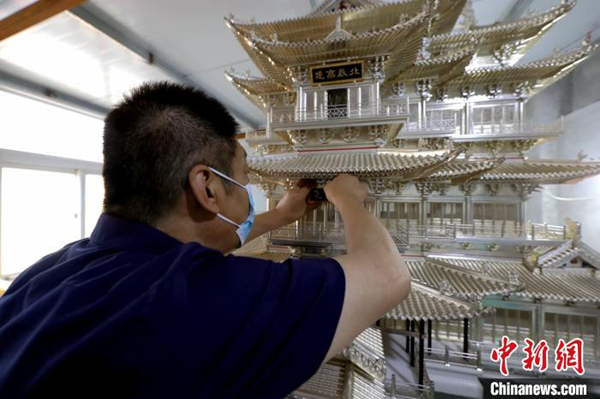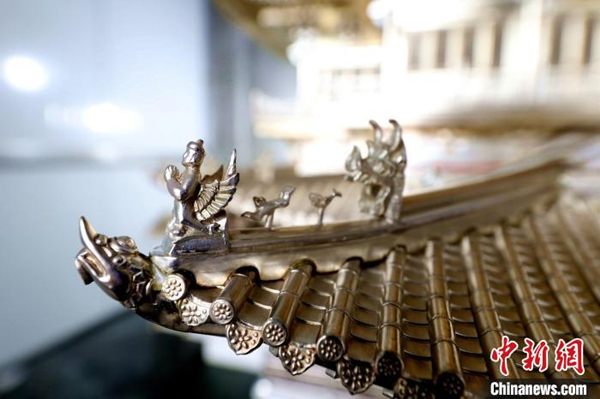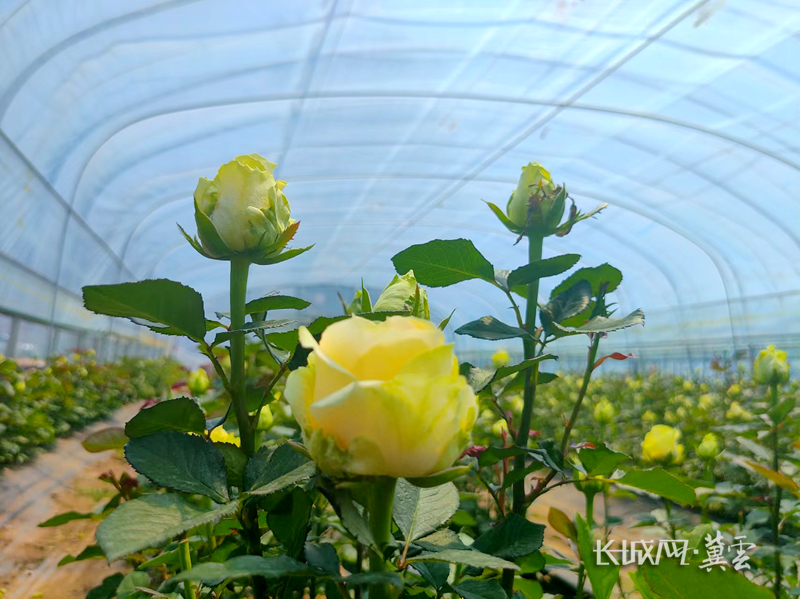Hebei craftsman Qian Haiqiang created a miniature of Tengwang Pavilion, one of China's four great towers in Jiangxi province, using 158 kilograms of silver during five years of dedication.
The mini Tengwang Pavilion has four floors, while its traditional East Asian hip-and-gable roof is 1.8 meters long, 1.7 meters wide and 1.6 meters high.
Both its style and components including eaves, rafters, arches, stigma, columns, and horizontal plaques were made in accordance with Song Dynasty (960-1279) construction.

Photo shows the miniature of Tengwang Pavilion created by Hebei craftsman Qian Haiqiang. Photo by Chinanews.cn
It also includes several beasts from ancient Chinese myths on its East Asian hip-and-gable style roof.
According to Qian, the model has 320 doors and windows of open work craft, and each door can be opened.All doors and windows are made up of 75 six-petal flowers, each of which is made up of six triangular parts. The main entrance under the plaque can be opened, and pillars in the pavilion seen through the doors and windows.

Qian Haiqiang puts up a plaque for the miniature of Tengwang Pavilion. Photo by Chinanews.cn
"Compared with the real Tangwang Pavilion, making this miniature version was not that easy. All its parts are so small that you must be careful, otherwise you will screw it up. You must be patient and persevering," said Qian.
Qian had learnt the gold and silver filigree craft from his father for over 30 years since he graduated from middle school. He finally stood out among other apprentices thanks to his considerable efforts.

Photo shows details of the miniature of Tengwang Pavilion created by Hebei craftsman Qian Haiqiang. Photo by Chinanews.cn
In 2016, Qian had an idea of building a silver model of Tengwang Pavilion at a ratio of 1: 36 using the gold and silver filigree craft.
The craftsman said gold and silver filigree lacks recognition from young people.

Photo shows details of the miniature of Tengwang Pavilion created by Hebei craftsman Qian Haiqiang. Photo by Chinanews.cn
This craft has become a municipal intangible cultural heritage and Qian is passing on it to his students for better inheritance and protection.
What they are inheriting is not only a skill, but also a culture, said Qian.






